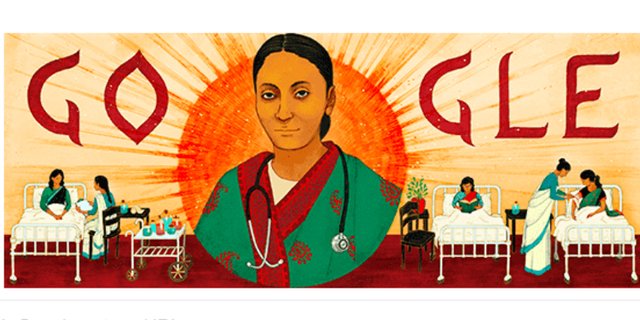Do you know the incredible Indian woman on Google Doodle today? Here are 6 interesting facts about her
Today would have been Rukhmabai Raut’s 153rd birthday – and the reasons we are still talking about this woman, 62 years after her passing, are plenty. With Shreya Gupta’s illustration, Google paid an ode to her by dedicating today’s Google Doodle to her depicting a self-assured, confident looking Rukhmabai, absolutely unfazed about being in what was considered a male bastion at the time – a hospital ward.
While Anandibai Joshi was the first Indian female doctor, Rukhmabai became the first practising female doctor in colonial India, because the former could not actually practice owing to her early and untimely death. However, her legacy is replete with even more revolutionary strides. Here are six interesting facts about the life and work of Rukhmabai.

She was a victim of child marriage
Born in Bombay to Janardhan Pandurang and Jayantibai, Rukhmabai later went on to live with her mother and stepfather, professor and doctor Sakharam Arjun, after father died young. However, at the young age of 11, she was married off to a 19-year-old Dadaji Bhikaji. The couple, however, never lived together, and Rukhmabai chose to finish her education.She refused to live with her husband
After her mother’s death, Rukhmabai was the heir to a lofty inheritance, which is when Dadaji decided to get in touch with her with the vested interest of staking claim to the wealth. Rukhmabai, however, contested that she did not consider their marriage legitimate, and continued to live with her stepfather while simultaneously furthering her education – arguing that the marriage had taken place when she was not in the age or position to consent to it.She fought a historic legal case
Dadaji decided to press legal charges against Rukhmabai and her stepfather in March 1884, accusing Sakharam of coercing his daughter not to live with Dadaji. A year later, Dadaji sought “restitution of conjugal rights”. Justice Robert Hill Pinhey boldly passed a judgement independent of any British precedents – for they only applied to consenting adults – or even Hindu Law for no one had resisted child marriage so fervently. This judgement stated that Rukhmabai could not be forced to stay married to Dadaji for she was an innocent child when she was married off and had no say in the matter. The society resisted this tooth and nail and considered this a direct attack on Hindu traditions and norms.She became an anonymous journalist
The case was reopened in 1886. In order to lobby for her stance, she authored a series of articles, with the pseudonym ‘A Hindu Lady,’ highlighting the plight of women in the context of child marriage and the restrictions placed on their life after widowhood. At a time when every newspaper was critical of her decisions, this series came to be highly talked about – and it was discovered much later that she was the author. The case reopened in 1887, giving Rukhmabai two options – to either go live with Dadaji or spend six months in jail, but Rukhmabai said she would gladly accept the latter. She then went on to seek out Queen Victoria, who overruled the court’s verdict and dissolved the marriage, albeit awarding Dadaji two thousand rupees.She changed an age-old law in Britain
Tales of this verdict travelled far and wide and even came to British shores, where they received widespread media attention. This conversation subsequently contributed to the passage of the Age of Consent Act, 1891, which criminalised child marriage in the British Empire.She fulfilled her dream of becoming a doctor
Through the support of stalwart Dr Edith Pechey, Rukhmabai was able to procure her degree in medicine from the London School of Medicine For Women. She even started providing medical aid to women in India through support from Eva McLaren, Walter McLaren and the Countess of Dufferin’s Fund. After studying from 1989-1894, she returned to India in 1894 and joined a hospital in Surat, where she served as the chief medical officer for 35 years. She retired around 1930, and eventually, breathed her last in 1955, at the age of 91.
Rukhmabai’s story is that of a woman who was not afraid to stand up for everything she believed in.